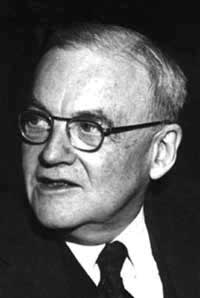History of the United States (1945–1964)
== History of the United States (1945–1964) ==
The history of the United States from 1945 to 1964 covers the post-World War II era, a period marked by significant social, political, and economic changes. This era saw the beginning of the Cold War, the rise of the Civil Rights Movement, and substantial economic growth.
Post-World War II Era[edit | edit source]
After the end of World War II in 1945, the United States emerged as one of the world's two superpowers, alongside the Soviet Union. The period immediately following the war was characterized by the Cold War, a state of political and military tension between the United States and the Soviet Union. This era saw the establishment of the United Nations and the beginning of the Nuclear arms race.
The Cold War[edit | edit source]
The Cold War dominated international relations during this period. The Truman Doctrine and the Marshall Plan were key policies aimed at containing the spread of communism and rebuilding war-torn Europe. The Korean War (1950-1953) was a significant conflict during this time, where the United States led a United Nations coalition to repel North Korean and Chinese forces from South Korea.
Domestic Policies and Economic Growth[edit | edit source]
Domestically, the United States experienced significant economic growth, often referred to as the post-war economic boom. The G.I. Bill provided returning veterans with benefits that included low-cost mortgages, low-interest loans to start businesses, and tuition and living expenses for education. This period also saw the rise of suburbia and the baby boom.
Civil Rights Movement[edit | edit source]
The Civil Rights Movement gained momentum during this period, aiming to end racial segregation and discrimination against African Americans. Key events included the Brown v. Board of Education Supreme Court decision in 1954, which declared state laws establishing separate public schools for black and white students to be unconstitutional, and the Montgomery Bus Boycott (1955-1956), which was a pivotal event in the movement.
Cultural Changes[edit | edit source]
The period also saw significant cultural changes. The 1950s and early 1960s were marked by the rise of rock and roll music, the popularity of television, and the emergence of the Beat Generation. The Space Race began with the Soviet launch of Sputnik 1 in 1957, leading to increased emphasis on science and technology education in the United States.
Related Pages[edit | edit source]
- World War II
- Cold War
- Truman Doctrine
- Marshall Plan
- Korean War
- G.I. Bill
- Suburbia
- Baby boom
- Civil Rights Movement
- Brown v. Board of Education
- Montgomery Bus Boycott
- Rock and roll
- Beat Generation
- Space Race
- Sputnik 1
Search WikiMD
Ad.Tired of being Overweight? Try W8MD's physician weight loss program.
Semaglutide (Ozempic / Wegovy and Tirzepatide (Mounjaro / Zepbound) available.
Advertise on WikiMD
|
WikiMD's Wellness Encyclopedia |
| Let Food Be Thy Medicine Medicine Thy Food - Hippocrates |
Translate this page: - East Asian
中文,
日本,
한국어,
South Asian
हिन्दी,
தமிழ்,
తెలుగు,
Urdu,
ಕನ್ನಡ,
Southeast Asian
Indonesian,
Vietnamese,
Thai,
မြန်မာဘာသာ,
বাংলা
European
español,
Deutsch,
français,
Greek,
português do Brasil,
polski,
română,
русский,
Nederlands,
norsk,
svenska,
suomi,
Italian
Middle Eastern & African
عربى,
Turkish,
Persian,
Hebrew,
Afrikaans,
isiZulu,
Kiswahili,
Other
Bulgarian,
Hungarian,
Czech,
Swedish,
മലയാളം,
मराठी,
ਪੰਜਾਬੀ,
ગુજરાતી,
Portuguese,
Ukrainian
Medical Disclaimer: WikiMD is not a substitute for professional medical advice. The information on WikiMD is provided as an information resource only, may be incorrect, outdated or misleading, and is not to be used or relied on for any diagnostic or treatment purposes. Please consult your health care provider before making any healthcare decisions or for guidance about a specific medical condition. WikiMD expressly disclaims responsibility, and shall have no liability, for any damages, loss, injury, or liability whatsoever suffered as a result of your reliance on the information contained in this site. By visiting this site you agree to the foregoing terms and conditions, which may from time to time be changed or supplemented by WikiMD. If you do not agree to the foregoing terms and conditions, you should not enter or use this site. See full disclaimer.
Credits:Most images are courtesy of Wikimedia commons, and templates, categories Wikipedia, licensed under CC BY SA or similar.
Contributors: Prab R. Tumpati, MD







